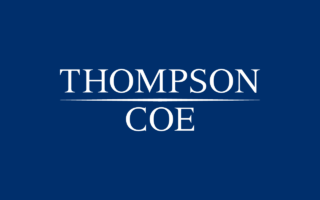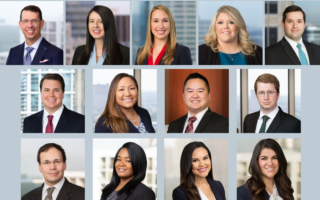Negotiation, Collaboration and Settlement: Ethical and Malpractice Considerations
Aug 9, 2004
I. Introduction
The dissolution of a marriage is typically fraught with emotional and financial stress, and, from the parties’ standpoint, the resolution of a divorce case is almost never satisfactory. Even so, the vast majority of cases are settled by agreement of the parties, and mediators often repeat the adage that a good settlement is one in which both parties are unhappy. Whether this is true or not, a client’s dissatisfaction with a settlement can become dissatisfaction with the lawyer, and can give rise to a legal malpractice claim. This article will address issues in negotiations and settlements that can give rise to legal malpractice claims. In that regard, it is important to understand the elements of a legal malpractice claim, as well as other causes of action that a lawyer may face.
II. The Rules that Apply
A. The Disciplinary Rules.
In addition to each lawyer’s personal resolve to act in accordance with good conscience and high morals, there are several sources of guidance for a lawyer’s professional conduct.
-
- The Model Code and The Model Rules. The ABA Model Code of Professional Responsibility (the “Model Code”) and the ABA Model Rules of Professional Conduct (the “Model Rules”) set forth the ABA’s minimum standards for a lawyer’s conduct.
-
- Texas Disciplinary Rules of Professional Conduct. Each state has adopted its own standards for professional conduct, many of which closely follow the ABA’s Model Code and Model Rules. In Texas, attorneys’ conduct is governed by Texas Disciplinary Rules of Professional Conduct (“TDRPC”).
Both the TDRPC and the Model Rules explicitly disclaim an intention to create a cause of action for clients against attorneys who fail to meet their obligations under the rules. “These rules do not undertake to define standards of civil liability of lawyers for professional conduct. Violations of a rule do not give rise to a private cause of action nor does it create any presumption that a legal duty to a client has been breached.” TDRPC, Preamble: Scope ¶ 15; see also, Model Rules, Preamble 6.
Texas courts have consistently agreed with these disclaimers. “While private persons can file complaints based on violations of the rules, the only party who has standing to enforce these rules is the State Bar. Accordingly, we overrule Advantage’s second point of error to the extent that it asserts the existence of a private right of action for a violation of State Bar Rules.” Home Advantage, Inc. v. Shaw, No. 07-97-0309-CV, 1998 WL 487042, at *3 (Tex. App. — Amarillo Aug. 19, 1998) (not designated for publication); see also, Martin v. Trevino, 578 S.W.2d 763, 770 (Civ. App. — Corpus Christi 1978, writ ref’d n.r.e.) (violations of the Code of Professional Responsibility do not give rise to a private cause of action).
But even though ethics rules do not per se establish a cause of action, Texas courts do look to the disciplinary rules as standards of conduct for attorneys in legal malpractice cases. See Avila v. Havana Painting Co., Inc., 761 S.W.2d 398, 400 (Tex. App. — Houston [14th Dist.] 1988, writ den’d)(failure to promptly deliver funds to client violated disciplinary rules, and gave rise to legal malpractice claim). Expert witnesses in legal malpractice cases regularly testify that an ethics rule represents the applicable standard of care for an attorney practicing in Texas. And although it has not ruled directly on the applicability of the TDRPC in legal malpractice cases, the Texas Supreme Court has, in a procedural disqualification case, approved the practice of referring to the rules for guidance, even after noting that the rules were not intended to set a standard for procedural decisions. In re Meador, 968 S.W.2d 346, 350 (Tex. 1998); see also, Anderson Producing Inc., v. Koch Oil Co., 929 S.W.2d 416, 421 (Tex. 1996)(TDRPC establish standard of attorney conduct and can be used for guidance in procedural disqualification determinations).
B. National Standards.
The 5th Circuit has held that, at least in disqualification proceedings, “national standards,” including the Model Rules, not the TDRPC, should be applied in a conflicts analysis. In re Dresser Indus., Inc., 972 F.2d 540, 543 (5th Cir. 1992); accord, In re American Airlines, Inc., 972 F.2d 605, 610 (5th Cir. 1992); see also, FDIC v. United States Fire Ins. Co., 50 F.3d 1304, 1312 (5th Cir. 1995) (holding that numerous ethical rules are relevant to a federal inquiry regarding the disqualification of counsel).
C. Texas Case Law.
While alleged violations of the TDRPC are addressed in grievance proceedings, most liability arises from Texas common law causes of action.
III. The Attorney-Client Relationship: Are You My Client?
A. The General Rule.
A client is someone who can sue for legal malpractice. Under Texas law, only those who are in privity with an attorney (i.e., in an attorney-client relationship) may bring a claim for malpractice. Persons outside the attorney-client relationship have no cause of action for legal malpractice. Barcelo v. Elliot, 923 S.W.2d 575 (Tex. 1996). “Privity” means the contractual connection or relationship that exists between the attorney and the client. Id., at 578-79. In so holding, however, the Texas Supreme Court recognized the relaxing privity requirement in other jurisdictions.
B. Implied Attorney-Client Relationship.
Despite the privity requirement, Texas courts have held, as have courts in virtually every state, that attorney-client relationships can be inferred based upon the conduct of the parties. Cantu v. Butron, 921 S.W.2d 344, 351 ( Tex. App. — Corpus Christi 1996, writ den’d); Byrd v. Woodruff, 891 S.W.2d 689, 700 (Tex. App. — Dallas 1994, writ dism’d by agr.; order withdrawn); Perez v. Kirk & Carrigan, 822 S.W.2d 261, 265-55 (Tex. App.– Corpus Christi 1991, writ den’d). No formal contract is required; in fact, the putative client can even be represented by other counsel. Examples of factual scenarios giving rise to a finding of an implied attorney-client relationships include:
-
- Perez v, Kirk & Carrigan, 822 S.W.2d 261, 265 – 66 (Tex. App. — Corpus Christ 1991, writ den’d) (legal services rendered gratuitously can give rise to attorney-client relationship);
-
- Parker v. Carnahan, 772 S.W.2d 151 (Tex. App. – Texarkana 1989, writ den’d)(finding question of fact as to whether attorneys for husband in divorce had a duty to advise wife that they were not representing her when they asked her to sign a joint tax return);
-
- Kotzur v. Kelly, 791 S.W.2d 254, 257 – 58 (Tex. App. — Corpus Christi 1990, no writ)(facts and circumstances gave rise to duty on the part of attorney to advise party that he was not representing them in litigation);
-
- Arlitt v. Paterson, 995 S.W.2d 713, 718 (Tex. App. — San Antonio 1999, pet. den’d)(implied attorney-client relationship where client retained counsel to prepare a joint estate plan); and
C. Entities as Clients.
In representing corporate entities or partnerships, a lawyer’s client is the entity itself, not individual officers, directors, partners, shareholders or other interested entities. Gamboa v. Shaw, 956 S.W.2d 662 (Tex. App. – San Antonio 1997, no writ); TDRPC 1.12(a).
D. Joint Clients.
For obvious reasons, joint representations commonly rise to potential conflicts of interest. The representation of multiple parties, such as a husband and wife, requires close scrutiny of the client relationship, the interests that will be affected and the duties owed. See e.g., Vickery v. Vickery, 999 S.W.2d 342 (Tex. 1999)(finding attorney-client relationship with husband and wife).
IV. Causes of Action Requiring Privity
A. Legal Malpractice.
Cosgrove v. Grimes sets forth the legal malpractice standard in Texas, requiring proof of an attorney-client relationship; a breach of the standard of care; injury that would not have occurred, but for that breach; and damages. Cosgrove v. Grimes, 774 S.W.2d 662, 665 (Tex. 1989). Under this standard, “attorneys are not strictly liable for all of their client’s unfulfilled expectations.” Id. But liability can result when an attorney’s conduct is such that no reasonably prudent attorney would have acted in that manner. See Willis v. Maverick, 760 S.W.2d 642, 645 ( Tex. 1988). When attorneys hold themselves out to be specialists in a field, their conduct will be measured by a reasonably prudent specialist standard. Rhodes v. Batilla, 848 S.W.2d 833, 843 (Tex. App. – Houston [14th Dist.] 1993, writ den’d).
-
- Proximate Cause. Although breaching a duty to a client will always reflect on an attorney’s professionalism and competency and can lead to professional sanctions, it will not always lead to malpractice liability. Again, Texas malpractice follows the well-known tort mantra of duty-breach-causation-damages. An essential part of that analysis is proximate cause. Texas courts require proof that the alleged breach of duty proximately caused the damage that the client suffered. Cosgrove v. Grimes, 774 S.W.2d 662, 665 (Tex. 1989). Proximate cause has been defined as including “foreseeability and cause in fact.” FDIC v. Shrader & York, 991 F.2d 216, 221 (5th Cir. 1993). Essentially, a legal malpractice plaintiff must prove that, but for the lawyer’s conduct, the result would have been different.
-
- Foreseeability. The first element of proximate cause, foreseeability, is not as limiting as it might seem. Foreseeability is not confined to the particular damages that resulted from the breach, but rather includes all damages the general type of which should have been anticipated: “Foreseeability does not require that the actor anticipate the precise consequences of his actions.” Hall v. Stephenson, 919 S.W.2d 454, 466 (Tex. App. — Fort Worth 1996, writ denied) (citations omitted). See also Dyer v. Shafer, Gilliland, Davis, McCollum & Ashley, Inc., 779 S.W.2d 474, 478(Tex.App. – El Paso 1989, writ denied) (emphasizing that foreseeability means that one should know of a danger posed to others by negligent acts).
-
- Cause In Fact: Suit Within a Suit. Cause in fact, the second element that must be proven to establish proximate cause, tends to be the more burdensome requirement from a plaintiff’s perspective. To establish proximate cause in a legal malpractice cases arising from underlying litigation, for example, the plaintiff must prove a “suit within a suit.” Schlager v. Clements, 939 S.W.2d 183, 186-187 (Tex.App. — Houston [14th Dist.] 1996, writ denied) (a ‘suit within a suit’ is required to prove that the client would have prevailed in the underlying action). See also, Mackie v. McKenzie, 900 S.W.2d 445, 449 (Tex.App. – Texarkana 1995, writ denied) (proof of ‘suit within a suit’ required). In cases in which the plaintiff seeks to recover in the underlying action, the plaintiff must prove the amount that would have been collected in order to recover in the legal malpractice action. Cosgrove v. Grimes, 774 S.W.2d at 665 (plaintiff must show what “would have been recovered and collected … if the suit had been properly prosecuted”); Ballesteros v. Jones, 985 S.W.2d 485, 489 (Tex. App. — San Antonio 1998, writ den’d).
-
- There is No Action for a Lost Chance to Prevail. The Texas Supreme Court has specifically held that no “lost chance of survival” exists in medical malpractice cases, and specifically noted the inapplicability of such a claim in legal malpractice cases. Park Place Hosp. v. Estate of Milo, 909 S.W.2d 508, 511 (Tex. 1995); Kramer v. Lewisville Memorial Hosp., 858 S.W.2d 397, 406 (Tex. 1993). In short, there is no cause of action for the loss of a chance “to hit the big one.”
-
- Proximate Cause. Although breaching a duty to a client will always reflect on an attorney’s professionalism and competency and can lead to professional sanctions, it will not always lead to malpractice liability. Again, Texas malpractice follows the well-known tort mantra of duty-breach-causation-damages. An essential part of that analysis is proximate cause. Texas courts require proof that the alleged breach of duty proximately caused the damage that the client suffered. Cosgrove v. Grimes, 774 S.W.2d 662, 665 (Tex. 1989). Proximate cause has been defined as including “foreseeability and cause in fact.” FDIC v. Shrader & York, 991 F.2d 216, 221 (5th Cir. 1993). Essentially, a legal malpractice plaintiff must prove that, but for the lawyer’s conduct, the result would have been different.
-
- Damages. In Texas, economic and punitive damages are available to a successful legal malpractice plaintiff; the jury decides the amount of damages as a question of fact. Millhouse v. Wiesenthal, 775 S.W.2d 626, 627, n.2 (Tex. 1989).
-
- Mental Anguish. Emotional distress damages may also be awarded in legal malpractice cases, albeit on a limited basis. Several years ago the Texas Supreme Court first upheld, without discussing, an emotional distress award in a legal malpractice suit. Cosgrove v. Grimes, 774 S.W.2d 662, 666 (Tex. 1989)($500 award for mental anguish). However, the court subsequently addressed the issue directly, and clarified that mental anguish or emotional distress damages cannot be awarded when the underlying injury is purely economic. Douglas v. Delp, 987 S.W.2d 879, 885 (Tex. 1999). The court refused to express an opinion on the appropriate standard when the underlying injury is not purely economic. Id. Just two months after Delp, the court refused, over the strenuous objection of Justice Hecht, to hear a case in which a court of appeals upheld a $350,000 award for emotional distress where the lawyer/defendant was found to have breached a fiduciary duty to her client in a divorce representation where the lawyer colluded with the other spouse, a friend from law school. See Vickery v. Vickery, 999 S.W.2d 342 (Tex. 1999).
-
- Punitive Damages. Texas Civil Practice and Remedies Code §41.003 authorizes exemplary damages where a plaintiff can prove fraud or malice by clear and convincing evidence.
-
- Damages. In Texas, economic and punitive damages are available to a successful legal malpractice plaintiff; the jury decides the amount of damages as a question of fact. Millhouse v. Wiesenthal, 775 S.W.2d 626, 627, n.2 (Tex. 1989).
-
- Legal Malpractice Claims Cannot be Fractured Into Other Causes of Action. In legal malpractice cases, plaintiffs often include several causes of action, such as breach of contract, breach of fiduciary duty, and DTPA allegations. Texas courts uniformly hold that legal malpractice actions are tort claims. See Cosgrove v. Grimes, 774 S.W.2d at 664; see also Willis v. Maverick, 760 S.W.2d 642, 644 (Tex. 1988) (holding that malpractice claims against professionals are tort claims). Texas courts have disallowed efforts to recast legal malpractice claims, noting that nothing is to be gained by “fracturing” a cause of action into numerous claims. See Sledge v. Alsup, 759 S.W.2d 1, 2 (Tex. App.—El Paso 1988, no writ); see also, Klein v. Reynolds, Cunningham, Peterson & Cordell, 923 S.W.2d 45, 49 (Tex. App.—Houston [1st Dist.]1995, rehearing overruled) (noting that plaintiff’s alternative causes of action were merely different “means to an end” in asserting a legal malpractice claim). This rule has been applied to eliminate breach of contract, DTPA violations, breach of fiduciary duty, and fraud claims that arise from conduct that is, in essence, professional negligence. Judwin Properties, Inc. v. Griggs & Harrison, P.C., 911 S.W.2d 498, 506, 507 (Tex. App.— Houston [1st. Dist.] 1995), affirmed, 981 S.W.2d. 868 (Tex. App.—Houston [1st Dist.] 1998, writ denied; 11 S.W.3d 188 (Tex. 2000) (a breach of contract claim that is in the nature of a tort, such as legal malpractice, as opposed to a contract (i.e. excessive legal fees), is a tort claim; breach of fiduciary claim couched entirely from facts that are essentially legal malpractice); Jampole v. Matthews, 857 S.W.2d 57, 62 (Tex. App.—Houston [1st Dist.] 1993, writ denied) (distinguishing an action for negligent legal practice and one for breach of contract where there is a claim of excessive fees).
B. Breach of Fiduciary Duty.
An attorney-client relationship is a fiduciary relationship. In addition to competent, therefore, an attorney must also be loyal to a client’s interests and always act with “utmost good faith.” Judwin Properties, Inc. v. Griggs & Harrison, 911 S.W.2d 498, 506 (Tex. App. –Houston [1st Dist.] 1995, rehearing overruled). In the words of one court, “the relationship between attorney and client has been described as one of uberrima fides, which means, ‘most abundant good faith,’ requiring absolute and perfect candor, openness and honesty, and the absence of any concealment or deception.” Perez v. Kirk & Carrigan, 822 S.W.2d 261, 265 (Tex. App. – Corpus Christi 1991, writ denied) (citations omitted). Upon proof of an attorney-client relationship, which creates a fiduciary duty as a matter of law, the burden of proof shifts to the fiduciary to prove the absence of a breach of fiduciary duty that is, “absolute and perfect candor, openness and honesty, and the absence of any concealment or deception.” Vickery v. Vickery, 999 S.W.2d 342, 376 (Tex. 1999).
-
- Informal Fiduciary Duties. An informal fiduciary duty may arise “from a moral, social, domestic or purely personal relationship…called a confidential relationship.” Associated Indem. Corp. v. CAT Contracting, Inc., 964 S.W.2d 276, 287 (Tex. 1998). Generally, courts will find an informal fiduciary relationship in circumstances in which “influence has been acquired and abused, in which confidence has been reposed and betrayed.” Crim Truck & Tractor Co. v. Navistar Int’l. Transp. Corp., 823 S.W.2d 591, 593 – 94 (Tex. 1992). Having said this, however, Texas courts recognize the extraordinary nature of a fiduciary relationship, which is not created lightly. Kline v. O’Quinn, 874 S.W.2d. 776, 786 (Tex. App. — Houston [14th Dist.] 1994, writ den’d); (cert. den’d, 115 SCt. 2579). “The mere fact that one party subjectively trusts another does not, alone, indicate that confidence is placed in another in the sense demanded by fiduciary relationships because something apart from the transaction between the parties is required.” Id.
-
- Burrow v. Arce. In cases involving a breach of fiduciary duty (in other words, where an attorney failed to act in the best interests of a client and benefited at the client’s expense), courts may order forfeiture of all or part of the attorneys’ fee. In Burrow v. Arce, the Texas Supreme Court eliminated the causation requirement for a breach of fiduciary duty, and held that in cases of a “clear and serious violation of a duty to a client,” fee disgorgement could be awarded, even in the absence of economic injury. Burrow v. Arce, 997 S.W.2d 229, 237-238 (Tex. 1999). The Arce court did, however, provide some protections for lawyers. The question of whether fee forfeiture is appropriate, and if so, whether only part of the fees should be forfeited, is to be determined by the court, not the jury. The trial court’s inquiry requires review of the particular facts and circumstances, including the “gravity and timing of the violation, its willfulness, its effect on the value of the lawyer’s work for the client, any other threatened or actual harm to the client, and the adequacy of other remedies.” Id.
C. Continuing Obligations.
Obligations to be competent and serve the interests of the client continue, of course, until the representation has ended. Even then, certain obligations survive termination of the attorney-client relationship, though. Pursuant to TDRPC 1.05 and 1.09, an attorney must keep client confidences in perpetuity. Further, an attorney is prohibited from representing anyone adverse to a former client on the same or a substantially related matter. TDRPC 1.09. Though waiver of a conflict arising from such continuing duties is allowed in either case, the obligations to the first client control until a fully informed consent can be obtained.
V. Causes of Action That Do Not Require Privity
A. The Texas Deceptive Trade Practices Act.
The DTPA includes a professional services exclusion, which provides that lawyers may not be sued under the DTPA in the absence of (1) an express misrepresentation of a material fact that is not advice, judgment, or opinion; (2) a failure to disclose; (3) an unconscionable action or course of action that is not advice, judgment or opinion; or (4) breach of an express warranty that is not advice, judgment or opinion. Tex. Bus. & Com. Code §17.29(c). Nonetheless, courts have allowed legal malpractice plaintiffs to circumvent this provision. For example, in Latham v. Castillo, 972 S.W.2d 66, 67 – 68 (Tex. 1998), the defendant attorney told his clients that he had filed a medical malpractice claim when he had not. The Texas Supreme held that this affirmative misrepresentation was not “advice, judgment or opinion” under DTPA §17.29(c), noting that, while a claim for negligent failure to timely file a claim would be a claim for legal malpractice, evidence of affirmative misrepresentations constitutes deceptive conduct that is actionable under the DTPA.
-
- A DTPA allegation increases the exposure to defendants in legal malpractice cases. In contrast to a legal malpractice claim, which requires a plaintiff to prove a “case within a case,” a plaintiff need not prove that he or she would have recovered in the underlying case to establish a claim under the DTPA. Latham v. Castillo, 972 S.W.2d at 69. Moreover, a plaintiff may recover mental anguish damages under the DTPA, despite the fact that such damages are typically not recoverable in legal malpractice actions. Finally, the DTPA allows the recovery of treble damages and attorneys’ fees, which are not recoverable in legal malpractice and professional negligence matters.
-
- DTPA Claims. DTPA claims against attorneys arise under broad statutory language. Examples include the following:
-
- An “unconscionable action or course of conduct.” TEX. BUS. & COM. CODE § 17.50.
-
- “…representing that goods or services have sponsorship, approval, characteristics, ingredients, uses, benefits, or quantities which they do not have or that a person has a sponsorship, approval, status, affiliation or connection which he does not.” TEX. BUS. & COM. CODE § 17.46(5).
-
- “…representing that goods or services are of a particular standard, quality, or grade…if they are another.” TEX. BUS. & COM. CODE § 17.46(7).
-
- “…representing that an agreement confers or involves rights, remedies, or obligations which it does not have or involve, or which are prohibited by law.” TEX. BUS. & COM. CODE § 17.46(12).
-
- “…failure to disclose information concerning goods or services which was known at the time of the transaction if such failure to disclose such information was intended to induce the consumer into a transaction into which the consumer would not have entered had the information been disclosed.” TEX. BUS. & COM. CODE § 17.46(23).
-
- DTPA Claims. DTPA claims against attorneys arise under broad statutory language. Examples include the following:
B. Breach of Contract.
Generally, claims that sound in tort, that is, claims arising from negligence in the rendering of professional services, will not support a breach of contract claim. However, courts distinguish between an action for negligent and one for breach of contract relating to fees. Van Polen v. Wisch, 23 S.W.3d 510, 516 (Tex. App. – Houston [1st Dist.] 2000, writ den’d). Disputes over billing or attorneys’ fees will support a breach of contract claim. Judwin Properties, Inc. v. Griggs & Harrison, 911 S.W.2d 498, 506 (Tex. App. – Houston [1st Dist.] 1995).
C. Negligent Misrepresentation.
In 1999, the Texas Supreme Court joined other jurisdictions in recognizing negligent misrepresentation, as defined in the RESTATEMENT (SECOND) OF TORTS § 552 (1997), as a cause of action that can be raised against an attorney by a third party. McCamish, Martin, Brown & Loeffler v. F.E. Appling Interests, 991 S.W.2d 787, 791 (Tex. 1999). A negligent misrepresentation cause of action requires that the attorney know that the third party is relying on the attorney’s representations and, in fact, intend such reliance. “Under the tort of negligent misrepresentation, liability is not based on a breach of the duty a professional owes his or her clients or others in privity, but on an independent duty to the non-client based on the professional’s manifest awareness of the non-client’s reliance on the misrepresentation and the professional’s intention that the non-client so rely.” Id. at 792. Although the third party’s reliance must be justified, most courts agree that reliance is never justified in an adversarial situation. Id. at 794. The question of whether an attorney can be liable to a client for negligent misrepresentation is undecided in Texas.
D. Fraud.
A lawyer can also be liable for intentionally tortious conduct, such as fraud. Toles v. Toles, 113 S.W.3d 899 (Tex. App. – Dallas 2003, no pet.); Likover v. Sunflower Terrace II, Ltd., 696 S.W.2d 468 (Tex. App. — Houston [1st Dist.] 1985, no writ). The lack of privity is not a defense to a third party’s fraud claims. “An attorney has no general duty to the opposing party, but he is liable to third parties when his conduct is fraudulent or malicious.” Id. at 472. A fraud claim requires proof of an actual misrepresentation, made with the intent that the person to whom the misrepresentation was made will rely upon it. Trenholm v. Ratcliff, 646 S.W.2d 927, 930 (Tex. 1983).
VI. Causes of Action That Are Not Recognized Under Texas Law (But That Still Get Alleged Anyway)
A. Liability Arising from Conduct Undertaken on Behalf of a Client in Litigation.
Texas courts have held that that a litigant has no cause of action against an opponent’s attorney for wrongful litigation conduct, even if the alleged conduct is fraudulent or intentionally tortious. Toles v. Toles, 113 S.W.3d 899. The Toles case arose from a contentious divorce. Mrs. Toles was living in the house, and her husband was ordered to pay the mortgage. During the course of the divorce, the husband defaulted on mortgage payments, and subsequently filed bankruptcy. The trial court entered orders preventing foreclosure, appointed a receiver, and approved the sale of the house. But Mrs. Toles refused to move out. The court entered an emergency order, ordering packers and movers to enter the property, and to pack and transfer the contents to a storage facility. The court also ordered the receiver to execute the necessary documents to finalize the sale of the house. After a final divorce decree was entered, the wife sued her ex-husband and his attorneys, as well as the receiver, alleging negligence, tortious interference with contract, abuse of litigation process, aiding and abetting the receiver’s breach of fiduciary duty, and fraud and conspiracy. The Toles court held that the wife’s claims against her ex-husband’s attorneys failed, because “attorneys are generally not liable to an opposing party for their conduct in representing their clients, even if that conduct is wrongful in the context of the underlying lawsuit.” Toles v. Toles, 113 S.W.3d at 910. The Toles court went on to note, however, that a lawyer who participates in fraudulent activities, even when acting for his client, acts in manner that is “foreign to the duties of attorney,” and may be liable if he knowingly commits a fraudulent act that injures a third party. Id. at 911
B. Aiding and Abetting the Breach of Fiduciary Duty.
Under Texas law, a third party who knowingly participates in a fiduciary’s breach of duty can be liable as a joint tortfeasor. Toles v. Toles, 113 S.W.3d 899; see also Kinzbach Tool Co. v. Corbett-Wallace Corp., 138 Tex. 565, 574, 160 S.W.2d 509, 514 (Tex. 1942); Horton v. Robinson, 776 S.W.2d 260, 266 (Tex. App. — El Paso 1989, no writ). However, Texas courts have refused to extend the Kinzbach Tool rationale to impose liability on attorneys who represent fiduciaries. Lesikar v. Rappeport, 33 S.W.3d 282, 318 -29 (Tex. App. — Texarkana 2000, pet. den’d). In the Lesikar case, one of two co-executrices, Jenny Rappeport, sued the other executrix’s attorney for allegedly conspiring with his client to breach her fiduciary duty to the estate. Lesikar, 33 S.W.2d at 318. Relying on Thompson, the Texarkana Court of Appeals affirmed the trial court’s summary judgment for the attorney. Id. at 320. In so ruling, the court observed that each co-executrix was entitled to retain and receive candid advice from an attorney concerning her duties. Id. The court declined to require an attorney hired by one co-executrix to effectively represent the other by making the attorney liable to the nonclient. Id.
IX. Conclusion
Obviously, there is no way to ensure that an attorney’s client will be completely satisfied with a settlement, or that attorneys will never be sued for legal malpractice. With that in mind, consider the following:
-
- Choose clients wisely. Avoid clients who have unrealistic expectations, have sued or talk about suing their prior attorney, are in financial distress, or you or your staff do not like.
-
- Pay attention to the language in fee agreements, collaborative agreements, and, of course, settlement agreements.
-
- Don’t get in over your head. Don’t take representations that are beyond your area of expertise, or that will require more time or resources than you are able to offer.
-
- Be a good communicator. Return phone calls promptly. Keep your clients apprised of the status of a case. A good “bedside manner” is a great diffuser in tense client relationships.
-
- Bill smart. Make sure fee agreements are clear, and that bills are accurate and fair. Understand that a suit to collect fees will always result in a legal malpractice counterclaim–don’t let arrearages get to that point.
Unfortunately, the world is not perfect, not every attorney gets to cherry-pick clients, and things occasionally slip through the cracks. And more often than we wish, attorneys do get sued for legal malpractice. But all is not lost. From a defense perspective, consider the following:
-
- A complete, well-documented file is excellent evidence of care and attention by an attorney. Most important is documented communication with the client.
-
- Detailed bills can be good evidence of the facts and circumstances that existed at the time decisions were made. Compare the following entries:
-
- 1/10/02 calls to client regarding litigation and settlement
-
- 1/10/02 telephone call with client to discuss which documents to produce in response to requests for production, client’s desire that no documents be produced, unless opponent produces documents first, client’s agreement to send additional files to our office immediately, and possible settlement options; call to opposing counsel to advise that no documents will be produced until his client produces documents; draft outline of settlement options and ramifications of each; fax outline of settlement options to client; telephone conference with client to review settlement options and ramifications;
-
- Detailed bills can be good evidence of the facts and circumstances that existed at the time decisions were made. Compare the following entries:
-
- Be honest about mistakes. Cover-ups always make matters worse. Having said this, admitting mistakes does not mean admitting negligence or liability.
-
- 4. Practice with integrity. Enough said.
End Note
Parts of this article were taken from Ethical Considerations and Malpractice Prevention in Litigation, which was presented at University of Houston Law Center. In addition, thanks to Kristen Hyatt, a 2004 graduate of SMU Law School, for assistance in research and drafting this article.






